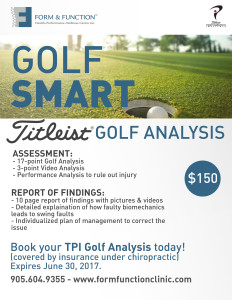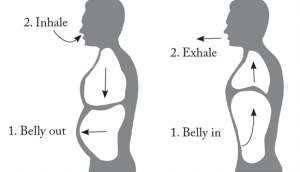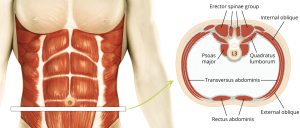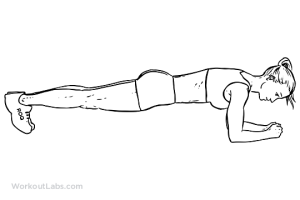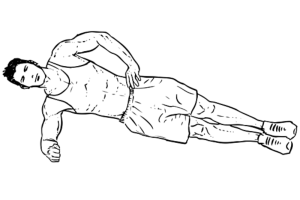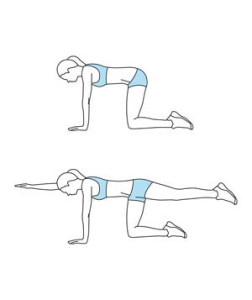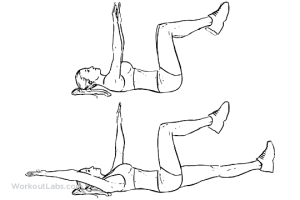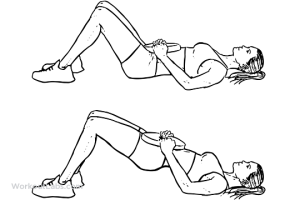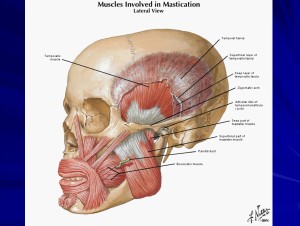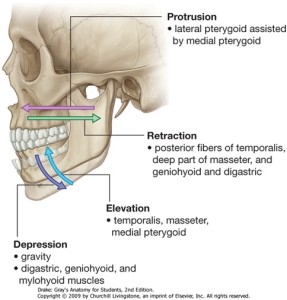Dr. Ryan Kim
Dr. Ryan Kim
BSc, DC
- Doctor of Chiropractic
- Doctor of Acupuncture
Dr. Ryan Kim is a board-certified chiropractor and acupuncture provider who is dedicated to providing safe and patient-centered care.
Dr. Kim holds a Doctor of Chiropractic degree from the Canadian Memorial Chiropractic College in Toronto. He initially graduated from Queen’s University with a Bachelor of Science (Honours) degree in Life Sciences. During his early studies, he developed a keen interest in human anatomy and neuroscience, as well as a strong passion for helping people. For these reasons, he was driven to pursue a career in medical sciences. Today, he works with a team of dedicated healthcare providers at Emkiro to provide outstanding care for his patients.
Dr. Kim has a wide range of experience diagnosing and treating different types of musculoskeletal conditions. He specializes in a variety of treatments, including spinal manipulative therapy, acupuncture, muscle release therapy, and rehabilitative exercises. In addition, Dr. Kim is also well-versed in joint mobilization, Gua Sha technique, orthotics, and electrostimulation.
Dr. Kim believes that health care, like clothing, should be tailored to the individual. To best help his patients, he combines clinical knowledge and the latest research with patient values and preference. Dr. Kim believes in educating his patients about the nature of their conditions, self-care tools that they can use at home, and different strategies to prevent future injuries. He also works collaboratively with his patients’ family physicians and/or other health professionals to best manage your condition.
Dr. Kim is registered and in good standing with the College of Chiropractors of Ontario.
Click below to book a chiropractic session with Ryan Today!
Acute Effort Migraine

The acute effort migraine is precipitated by short periods of vigorous activity such as sprinting. It has been described following such sports as netball, hockey, cycling, swimming, and weightlifting. It is commonly unilateral, severe, usually preceded by an aura, and accompanied by nausea and often vomiting and neck stiffness. Acute effort migraines typically are throbbing or pounding in character, and recovery may require hours or even a full night’s sleep. A past or family history of migraine is often present. Treatment of the acute attack may include ergotamine preparations, oral or injected sumatriptan, analgesics and antinauseants.
Do This Breathing Technique to Help You Stress Less
Diaphragmatic breathing is deep breathing from the diaphragm, instead of shallow breathing. It is also a relaxation technique.Diaphragmatic breathing has many benefits as there is more oxygen going into your body. Oxygen will sooth your nervous system, lower stress on your body, and calms your mind, which will in turn improve concentration.
Physically, diaphragmatic breathing will increase your lungs’ capacity and will detox your body as the oxygen will stimulate blood flow.
Diaphragmatic breathing is a breathing technique that you can do anytime, anywhere. Please make an appointment with the RMT to discuss how to improve your breathing to benefit your health.
Risks of High Levels of Mercury
Mercury is one of those elements we are told to be careful of, but the question remains why? To answer this, we first need to examine what mercury is and how it gets into the foods that we eat.Mercury is a metal that comes in many forms. It is most commonly used for dental tools and manufacturing partials in factories but is predominantly present in the pollution we produce from emission gases. When it rains, the water collects the metal and drains it in the same water. When it reaches the water, many fish absorb the element.
Now that we know what it is, we can look at the effect of having this metal in our system. Mercury directly affects our nervous system and heart. Even small amount of mercury in infants can cause developmental issues. For this reason, women who are pregnant are not recommended to eat fish to ensure full nervous development of infants. In adults, it can weaken our immune systems and cause heart irregularities.
Some of you may be saying that our bodies will just digest the food and eliminate the Mercury – however, amounts greater then 40ml can stay in your system for 30-40 days making it very difficult for your body to quickly eliminate the element before it does damage.
Health Talk: The Core
Ever heard of someone telling you that they are “training their core.” Or have a fitness/rehabilitation professional tell you that you have a weak core? What does that mean? How do you strengthen it? Well, let’s talk about what the core is first of all.What is the Core?
- When professionals refer to the core, they are talking about a set of muscles around your stomach, back and hips. These include: rectus abdominus, internal and external obliques, transverse abdominus, quadratus lumborum and the gluteal. Collectively this group of muscles, when functioning correctly, is capable of creating a stable environment for the spine by using both strength and endurance to prevent excessive spinal movements. Basically, the core is designed to act as a platform from which your arms and legs push off of to create motion. Imagine if this platform (core) was very wobbly (ie weak); when you use your arms and legs, the wobbly platform will shake. This shaking can then cause your ligaments, joints and muscles to be overused or used improperly leading to injury.
How do I strengthen the Core?
- There are several exercises that are great for building core strength and endurance. Because the core helps stabilize, you will notice these exercises hardly cause the spine to move. You will be either holding a position without movement or holding the core steady while moving your arms and/or legs. Here are the five exercises I prescribe for core training.
- Plank
- Hold the plank position for as long as you can without feeling sore in the back. You should only feel your stomach muscles working. Try to do at least 3 sets of 30sec+. Work your way up to 60sec.
- Side plank:
- Hold the side plank position for as long as you can. You should only feel your side stomach muscles working. Try to do at least 3 sets of 30sec+. Work your way up to 60sec.
- Bird dog:
- Lift up alternate arm and leg and hold in position without the core moving. If there was a small ball on your back during the exercise, it should not fall off. Hold that position for 5-10sec, and repeat on both sides 30 times.
- Dead bug:
- Start with both arms and legs in the air. Slowly lower alternate arm and leg to just above the floor and hold. Your back should not arch at all. If it does, bring your feet up slightly higher. Hold the position for 5-10sec, and repeat on both sides 30 times.
- Glute bridge
- Lift your hips up off the floor with your feet planted shoulder width apart. Hold this position for 5-10sec and lower down. Repeat 30 times.
These exercises are but some that can strengthen your core. You can always consult the professionals at Form and Function clinic to progress these exercises once they become too easy or if you have any questions to start. Work on these exercises and you will lower the risk of future back pain episodes.
What is Rotator Cuff Tendinitis?
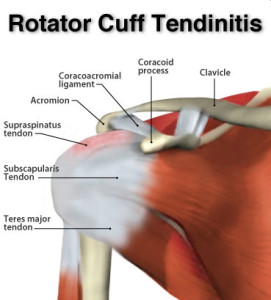
Rotator cuff tendinitis happens due to swelling or inflammation of tendons of the shoulder joint. This could happen due to any injuries like heavy lifting, pulling, pushing or any repetitive activities.
It is more common in people who play sports due to high impact activities.
Most of the athletes can regain full function depending of the extent of injury.
Symptoms: Pain and swelling of shoulder tendons, pain with outstretched arm or reaching behind the back , decreased ROMs and strength.
Physiotherapy treatments: Manual Therapy, Exercises and stretching will help to decrease pain and swelling. Electrotherapy helps to decrease swelling and pain.
Contact Form and Function today for your assessment!
Health Tip: Temporomandibular Joint Dysfunction
Do you have headaches, neck pain, ringing in the ears, or pain into the jaw/teeth? Did you know your temporomandibular joint or jaw could be the cause?
The temporomandibular joint (TMJ) or jaw joint is a two hinged joint that allows for complex movements to allow you to eat, talk, yawn and do things with your mouth. You have two TMJ joints, one on each side of your head. The TMJ is comprised of:
🔹Muscles of chewing
🔹Joint capsules
🔹Articular Discs
🔹Tissue behind the disc
We will be assessing the following motions during a self assessment. The jaw is quite complex and has four basic movements, each of which are required for proper function:
– Protrusion – jaw moves forward
– Retraction – jaw pulls backward
– Elevation – jaw rises
– Depression – jaw drops
The first question you can ask yourself is: Do I have a tempomandibular joint dysfunction (TMD)? The answer may be quite simple. Answer the following questions and try this self assessment screen to see for yourself.
– Is there any pain in your jaw?
Do you have headaches?
– Do you have neck pain?
– Do you have ringing in the ears?
– Do you have deep tooth pain (cleared by your dentist)
– Does your jaw tire easily while eating?
Try this self assessment:
– Look into the mirror
– Gradually open your mouth wide – can you open it as wide as 3 of your knuckles?
– Does your jaw shift one way? Does it shift back?
– Do you have a pop or click sound?
– Does one side feel tighter than the other?
These are all examples of things that you can see/feel when assessing yourself for a potential TMD. If you notice you have any of the following, you may have a TMD! Get yourself checked out and come in for a screen and we can see how well you function.
Dr. Christopher Duong is a board-certified Chiropractor specializing in TMJ pain.
Patcharee Bergsma is a Registered Massage Therapist and Thai Massage Therapist that performs TMJ massage on external TMJ muscles as well as Interior TMJ Muscles and joints

